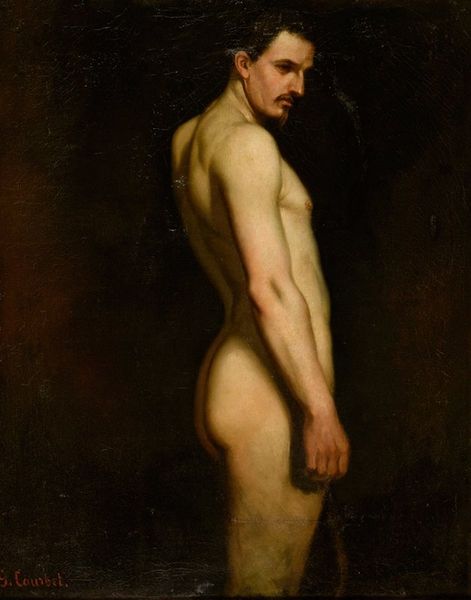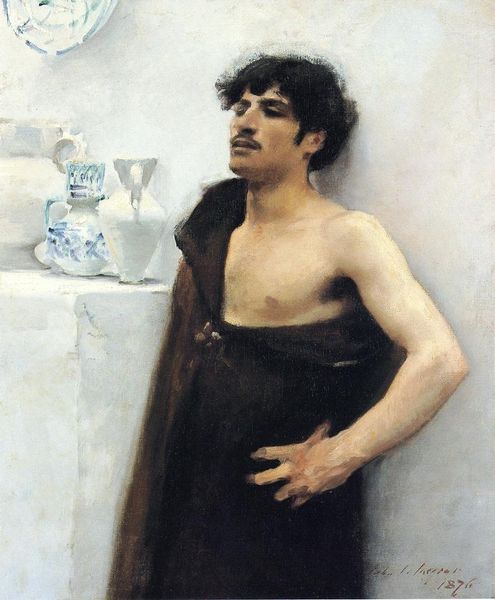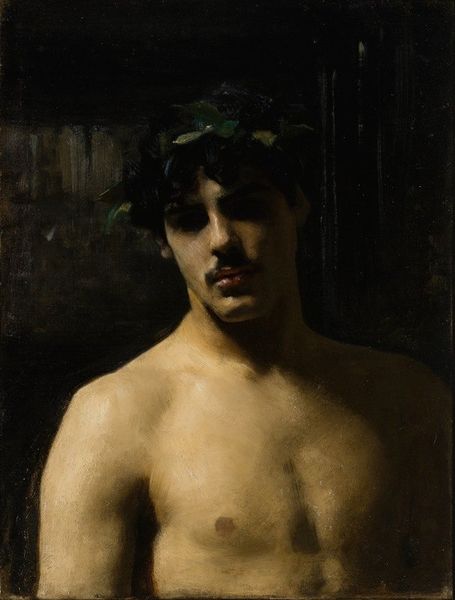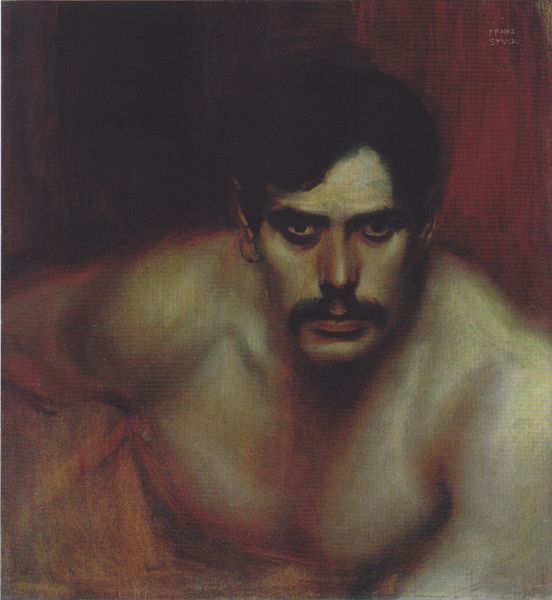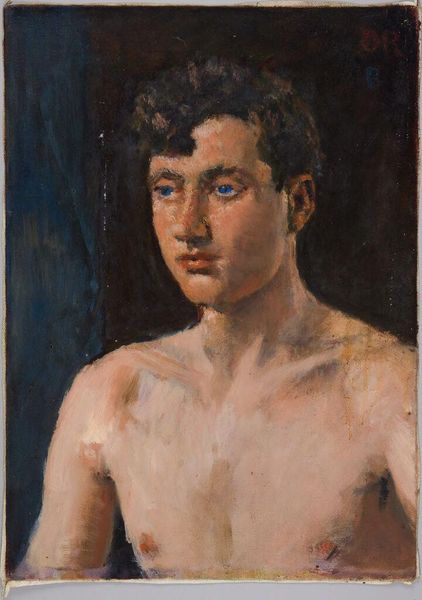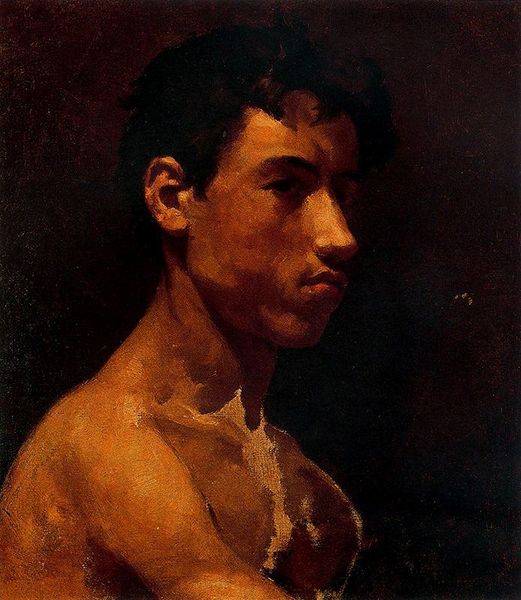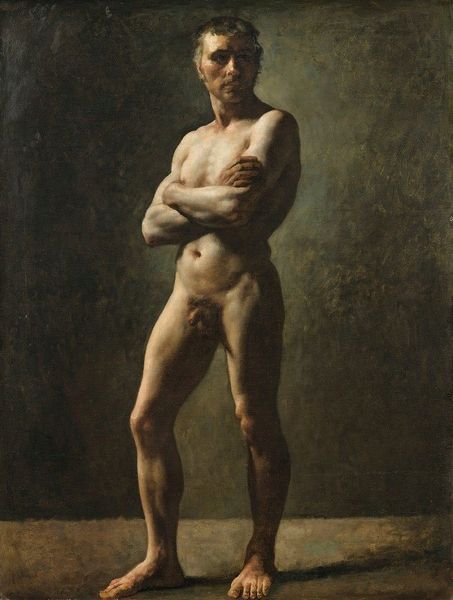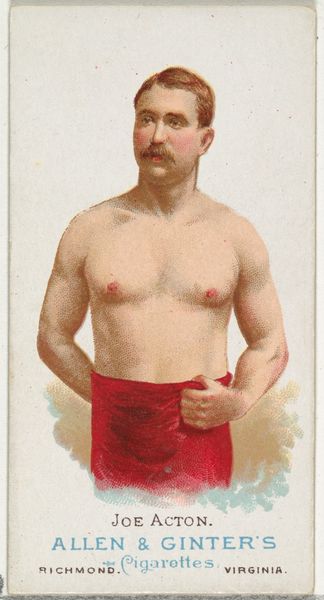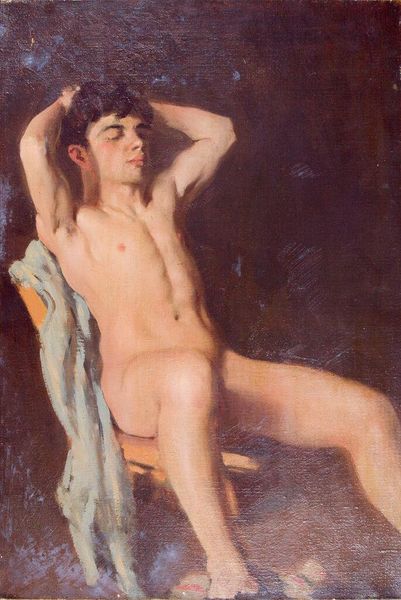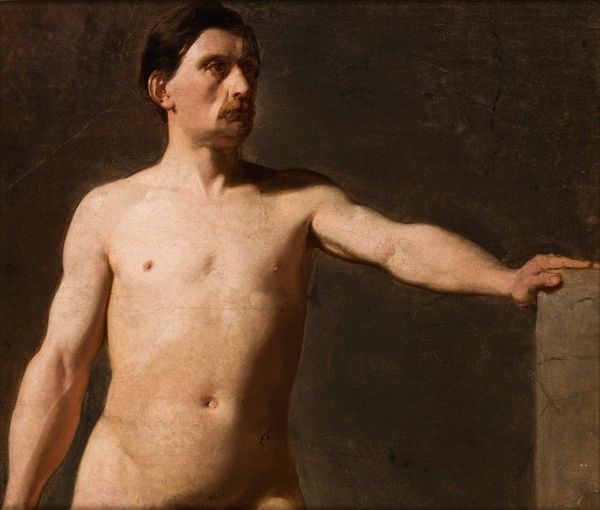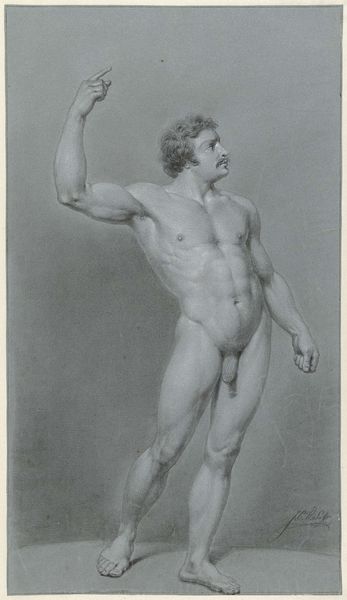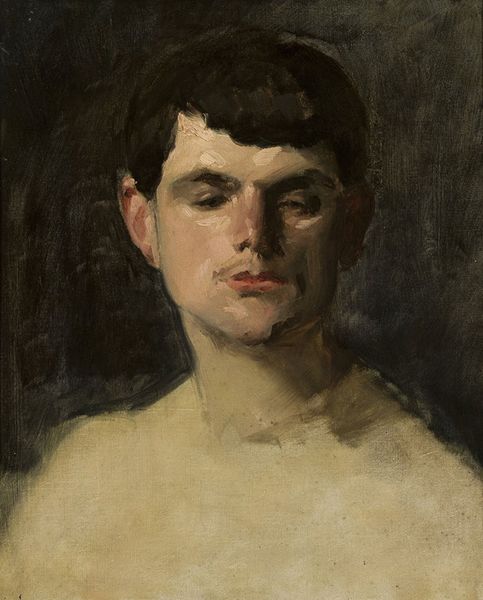
Copyright: Public domain
Curator: Gustave Courtois’s “Portrait of Maurice Dériaz,” painted in 1906, is an arresting image. What’s your first take? Editor: Powerful. There’s an almost sculptural quality to the figure, enhanced by the dramatic lighting. The subject's gaze is intense, yet the pose, hands clasped low, projects vulnerability, if that makes sense? Curator: Absolutely. Courtois was an academic painter steeped in realist traditions. He exhibited widely at the Salon and sought to ennoble his subjects through classical reference points. The partial drapery, the studied musculature—all of it reflects a conscious attempt to elevate a contemporary figure to the status of a historical hero or perhaps even a mythological figure. Editor: Yet, even within the boundaries of academic realism, the hyper-masculine ideal, this idealized representation of the male physique feels quite charged, doesn’t it? One can’t ignore the undercurrents of homoeroticism in the presentation. What are we meant to project onto the sitter? How much agency did Dériaz, whoever he was, actually possess? Curator: These are salient points. Courtois painted portraits of notable figures of his era, predominantly from artistic and intellectual circles. In exhibiting this work, Courtois engages with broader dialogues surrounding gender roles, and societal perceptions of the male form at the time. It's not just about individual representation; it is, undeniably, a social document. Editor: It challenges, in some ways, conventional power dynamics in portraiture. The subject’s physical strength is undeniable, yet his exposed torso invites a kind of viewership that transgresses what was permissible at the time. Is he vulnerable or is he challenging a kind of ideal? Curator: I find myself circling back to your earlier insight about vulnerability. Despite the seemingly heroic physique, the eyes communicate a deep thoughtfulness, perhaps even questioning. Editor: It’s this very push and pull – this intersection of classical ideals with the messier realities of embodied existence–that continues to fascinate me. I'm left contemplating not just who Dériaz was, but what this image reflects about early 20th-century society. Curator: Indeed. The painting serves as a lens, refracting the complexities and contradictions of a transformative era in French society.
Comments
No comments
Be the first to comment and join the conversation on the ultimate creative platform.
